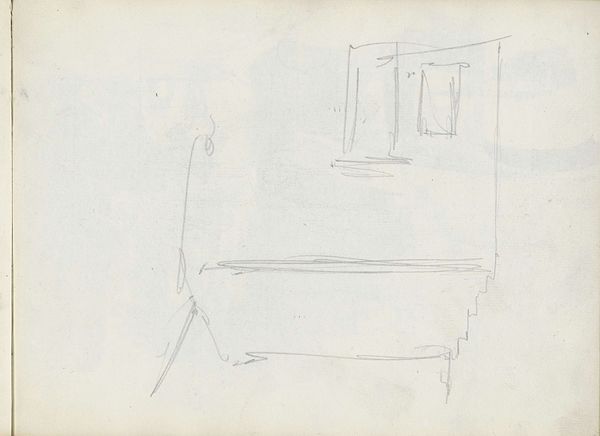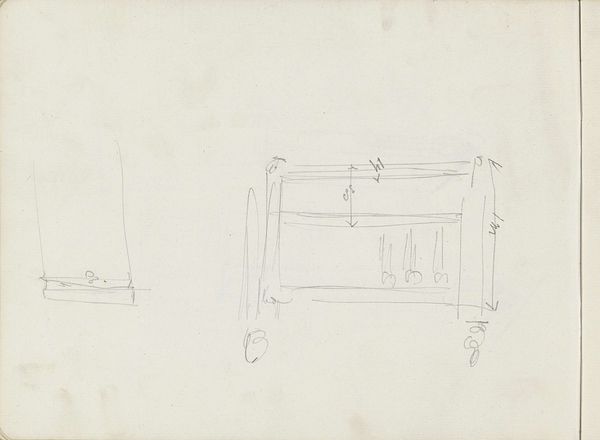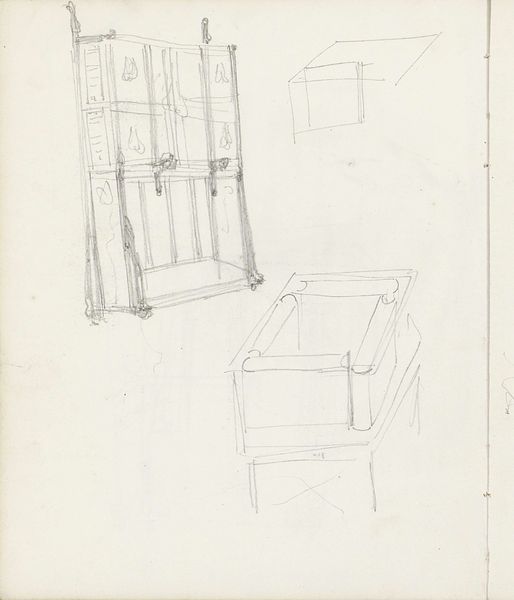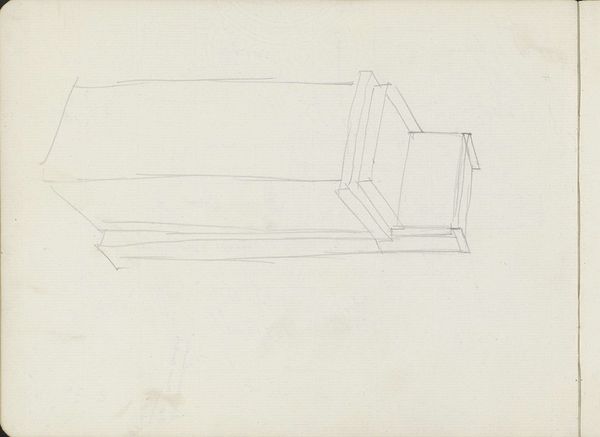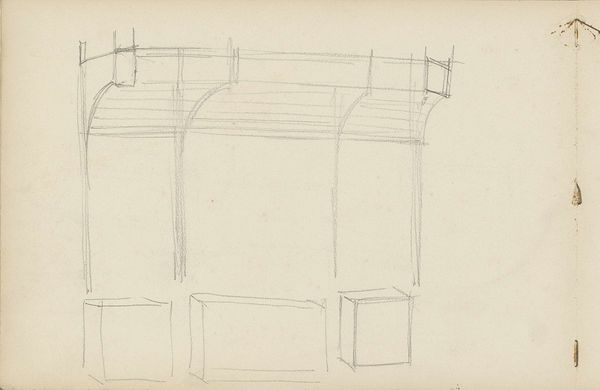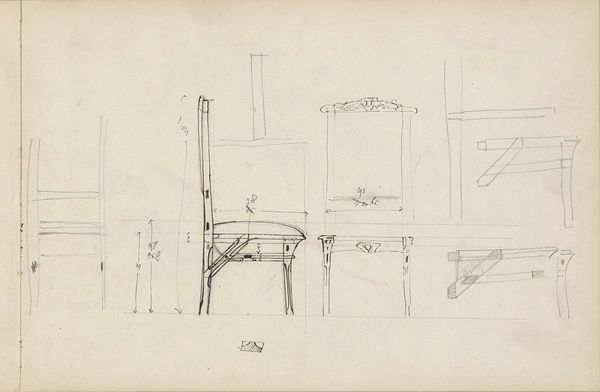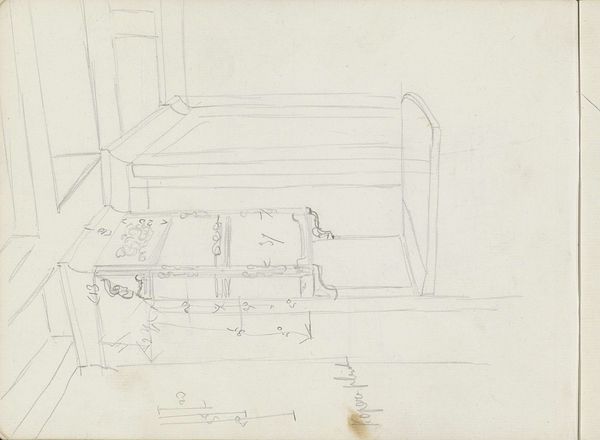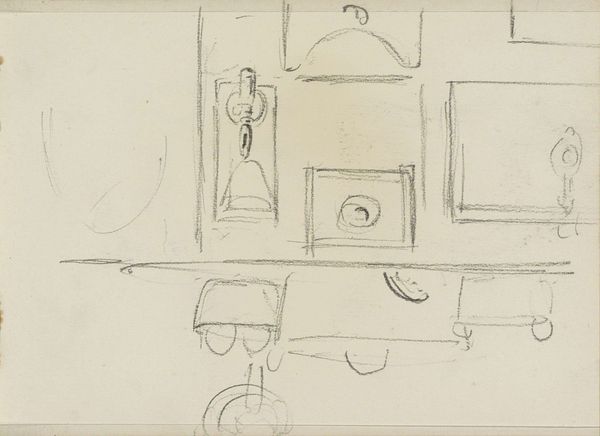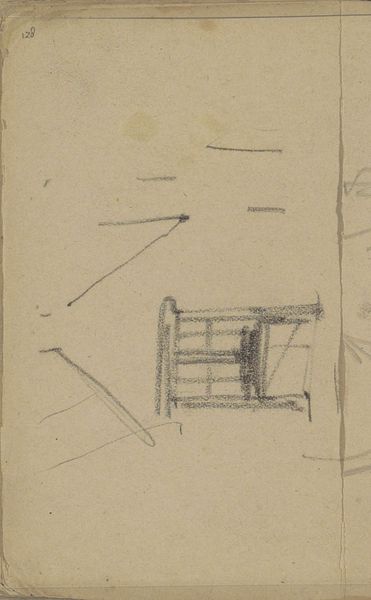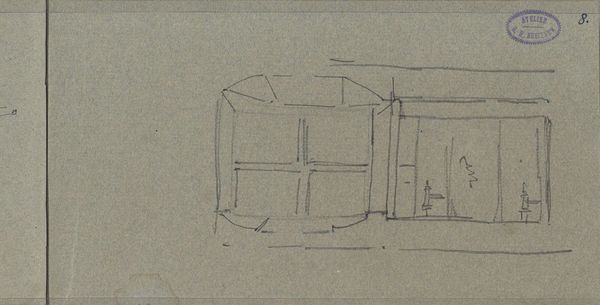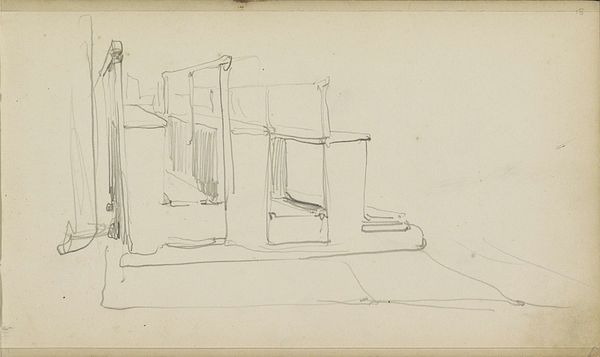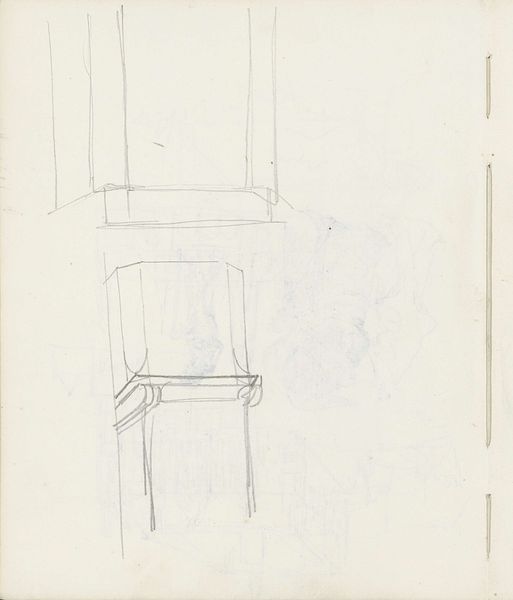
drawing, paper, pencil
#
drawing
#
art-nouveau
#
paper
#
form
#
geometric
#
pencil
#
line
Copyright: Rijks Museum: Open Domain
Curator: We're looking at "Raamkozijn," a pencil drawing on paper made by Carel Adolph Lion Cachet, sometime between 1905 and 1906. It’s currently held here at the Rijksmuseum. Editor: It feels like an architectural sketch. There's a sort of delicate simplicity to the lines, even though the perspective feels slightly off. It conveys a very raw and rudimentary feeling to it. Curator: Cachet was a key figure in the Dutch Art Nouveau movement. Notice how even this seemingly simple sketch uses lines to define shapes; and how that defines the form of the window itself. Editor: I wonder about the role of windows, not only in architecture, but in artistic expression at the time. Windows as frames, allowing different people see outside differently, while being inside the same cultural atmosphere. What statement might Cachet be trying to make here about social class in Amsterdam by representing it here. Curator: It seems there's little in the way of social criticism at play within the artwork. The composition draws upon more elementary components. Observe the geometric relationships—the squares and rectangles create a rhythmic interplay that speaks to a desire for structural clarity and artistic unity above anything else. The window ceases to merely frame; it is framed, to create the very picture we now gaze upon. Editor: And perhaps that tension is at the heart of Art Nouveau—that it wanted to showcase design while at the same time reflecting socio-historical undercurrents that define and support any era where art arises and thrives. It wants to elevate the design aesthetic, to see lines as being artistic tools on their own. Curator: The rough pencil strokes lend it an immediacy and freshness, almost like we are witnessing the moment of its creation. There's a certain vulnerability in the unrefined quality that I find really compelling. Editor: Agreed, the fact it's unfinished opens many windows into a particular cultural space at the dawn of an artistic revolution. I never looked at Art Nouveau like that before, with all its focus on structure. Thanks for the insight.
Comments
No comments
Be the first to comment and join the conversation on the ultimate creative platform.

